Last Chance to Catch NYC's Holiday Notalgia Train
We met the voices of the NYC subway on our nostalgia ride this weekend!


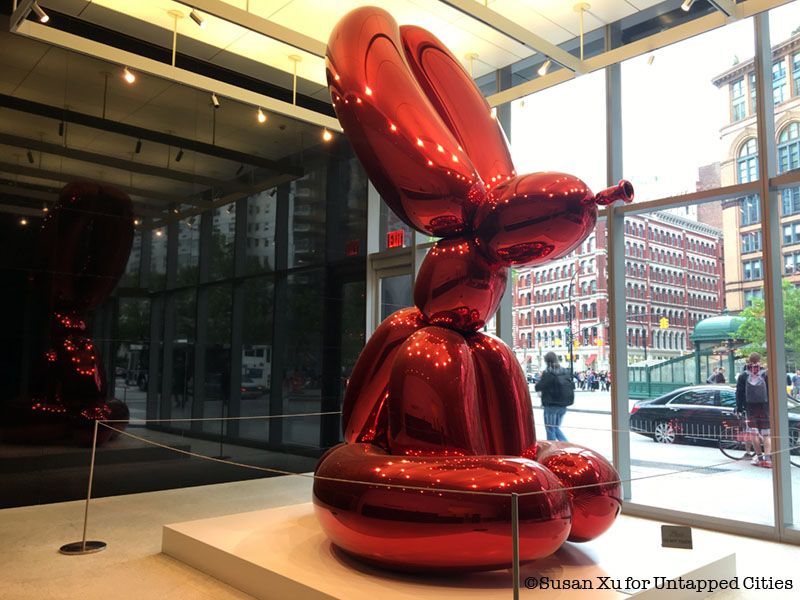
Jeff Koons’ Seated Ballerina at Rockefeller Center is the latest of the artist’s work in New York City, but he has many other pieces viewable today and installed in the past. Koons, a New York resident, was born in York, Pennsylvania in 1955 and came to international acclaim following a 1980 exhibition at the New Museum. With inspiration from pop art and Dadism, Koons’s works are often iterative. In the public sphere, they are of monumental scale, but his gallery and museum art also stand on their own.
Here is where you can find the works of Jeff Koons currently in New York City, along with installations from the recent past::
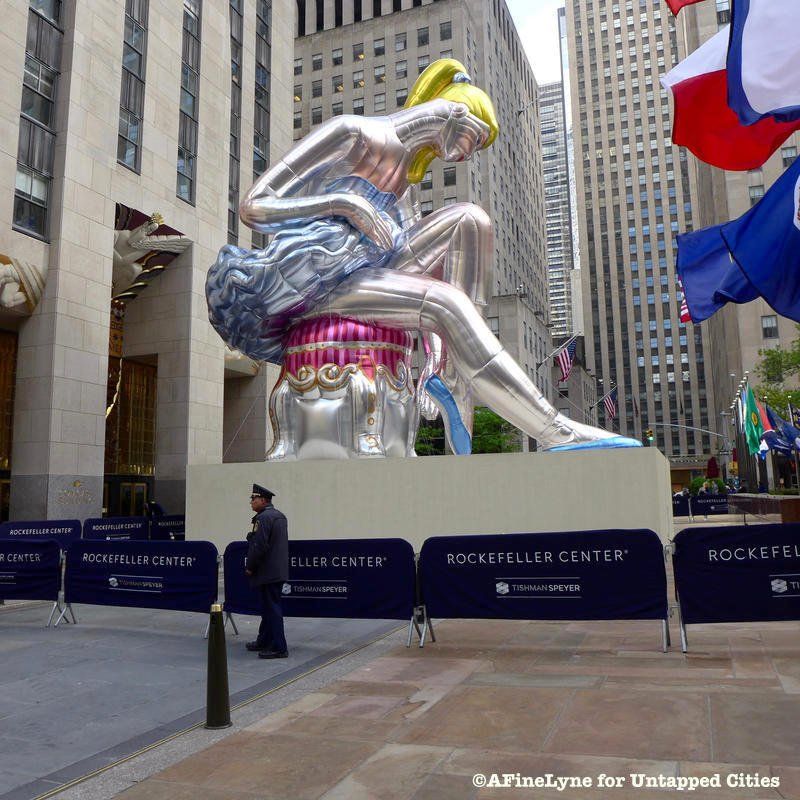
Last Friday, Jeff Koons’ Seated Ballerina opened at Rockefeller Center, a joint production between Koons, Art Production Fund and the beauty brand Kiehl’s, which is donating $100,000 of sales from a special edition Jeff Koons tin this month. The work is part of Koons’ Antiquities series and is inspired by a figurine from a Russian factory. This is the third version of the Seated Ballerina that Koons has made and the largest. In addition, it is only the second inflatable Koons has ever made for a public space.
See more photographs of Seated Ballerina here. The sculpture will be up until June 2nd.
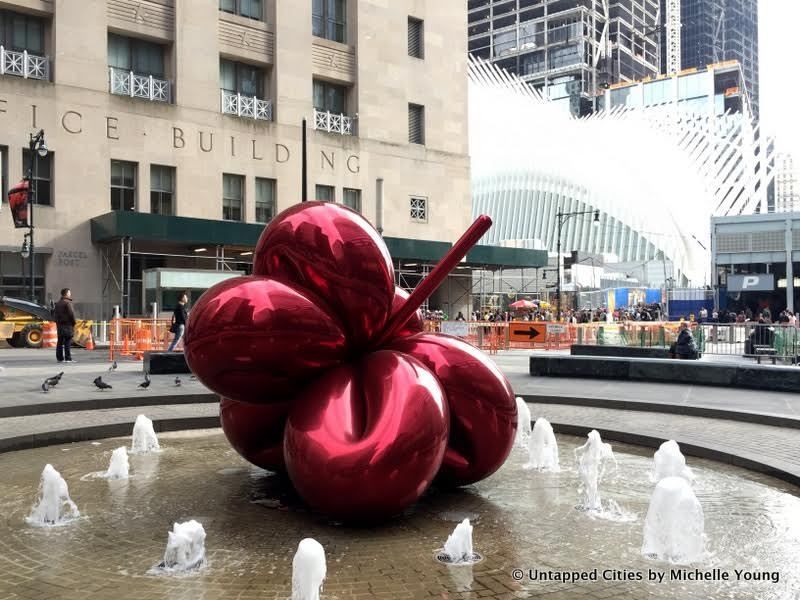
Balloon Flower, located in the plaza in front of 7 World Trade Center on Greenwich Street, is one of five sculptures (1995-99) in a series by Jeff Kooons with colors like magenta, blue, yellow, orange. The nine-foot high, stainless steel sculpture is located in a circular fountain in a triangular park. It consists of six large blossoms, or balloon-like shapes of various sizes, and one flower stem.

Astor Place is no stranger to large-scale artwork. A Keith Haring work, “Self Portrait” is in front of the entrance to 101 Astor Place and Jeff Koons’ Balloon Rabbit is in the lobby of the entrance at 51 Astor Place, part of the same building as 101 Astor Place. The Balloon Rabbit belongs to the collection of Edward J. Minskoff, whose equity company built the Astor Place building that is home to IBM, St. John’s University and other tenants. The Balloon Rabbit is fourteen feet tall and weights 6,600 pounds.

The Whitney Museum did a full retrospective exhibition on Jeff Koons at its former Bruer building on the Upper East Side from 2014 to 2015, his first in a major museum and the final exhibition before the Whitney moved to its current location in the Meatpacking district. But in the permanent collection at the Whitney is the work “New Hoover Convertibles, Green, Blue; New Hoover Convertibles, Green, Blue; Doubledecker,” a ready-made-like work featuring four Hoover vacuum cleaners, which was originally exhibited in a 1980 exhibition at the New Museum.
Created in an era before Dyson, Koons almost presaged the designification of such household objects. The museum writes, “Koons placed brand-new, store-bought vacuum cleaners in a sterile, fluorescent-lit vitrine that protects them from the dirt and grime they are designed to remove. By thoroughly transforming the expected context and use of the vacuum cleaners, and by raising domestic appliances to the realm of fine art, Koons makes us question not only our assumptions of what constitutes art, but society’s obsession with cleanliness, efficiency, and newness. ‘I don’t seek to make consumer icons,’ Koons explained, ‘but to decode why and how consumer objects are glorified.’
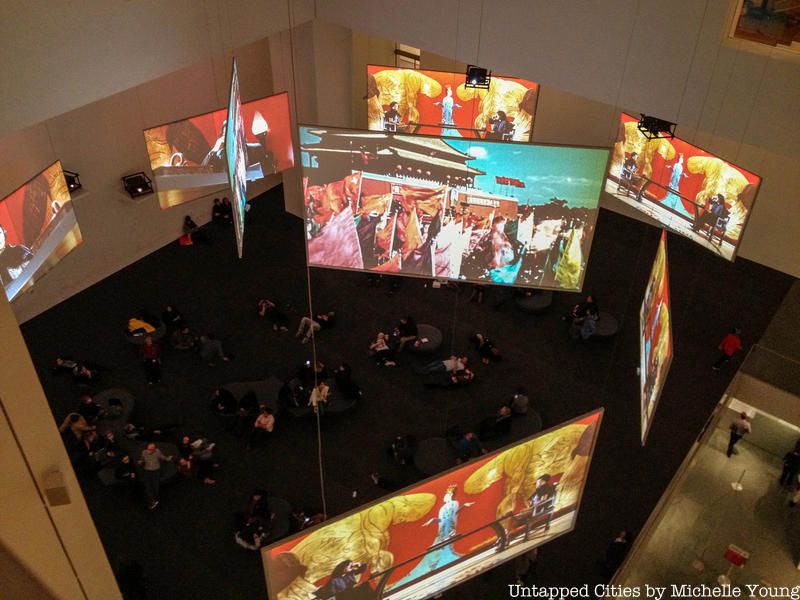
The MoMA has nine acquisitions from Jeff Koons but the only one currently on view is “New Shelton Wet/Dry Doubledecker,” another vacuum cleaner work. This one features two 5 gallon New Shelton brand Wet/Dry vacuum cleaners, never used and enclosed in plexiglass, much like the New Hoover Convertibles at the Whitney Museum.
The MoMA description provides additional information on the construction of this work, including that the glass is hermetically sealed. Koons has also highlighted the sexual nature of the vacuum cleaners, stating “I chose the vacuum cleaner because of its anthropomorphic qualities. It is a breathing machine. It also displays both male and female sexuality. It has orifices and phallic attachments.”
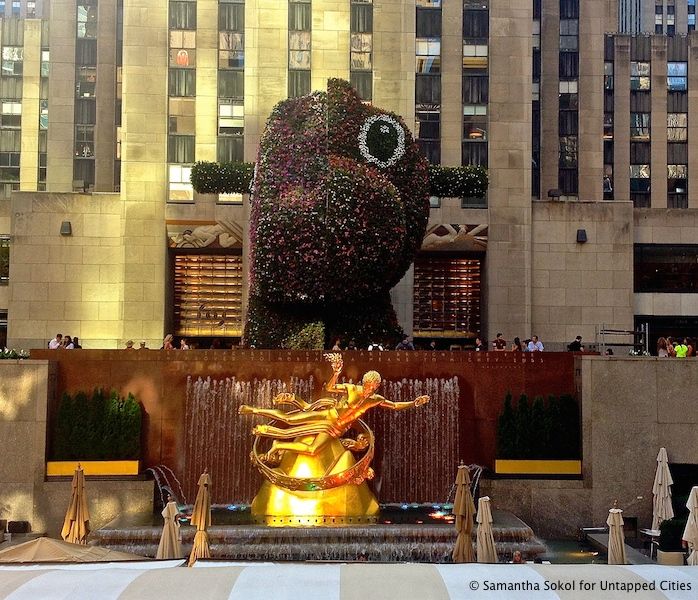
Split Rocker, which was installed by Public Art Fund at Rockefeller Center in 2014 to mark the Whitney Museum retrospective of Koons’ work, was his first piece in the location in 14 years. The 150-ton, 37-foot flower-sculpture was half pony, half dinosaur and made of 50,000 flower arrangements. It was on display three times before that since its inception in 2000, but just in Europe at the cloister of the Palais des Papes in Avignon in 2000, in the gardens of Versailles in 2008, and lastly at Foundation Beyeler.
The work was inspired by the toys of Koons’ sons and according to Foundation Beyeler, Split Rocker is a “disassembled and differently reassembled figure that simultaneously looks forward and to the side. Split-Rocker relates to the Cubism of Picasso while at the same time turning it in an entirely new direction…With the combination of pony and dinosaur, Split-Rocker embodies that confrontation of opposites that is also expressed in the notion of a “monstrous,” gigantic children’s toy. Yet the artist chooses transitory flowers, of all things, as the material for a monument that promises duration. It is not least in this special interplay of supposed opposites that the true tension and force of Koons’s art lie.”
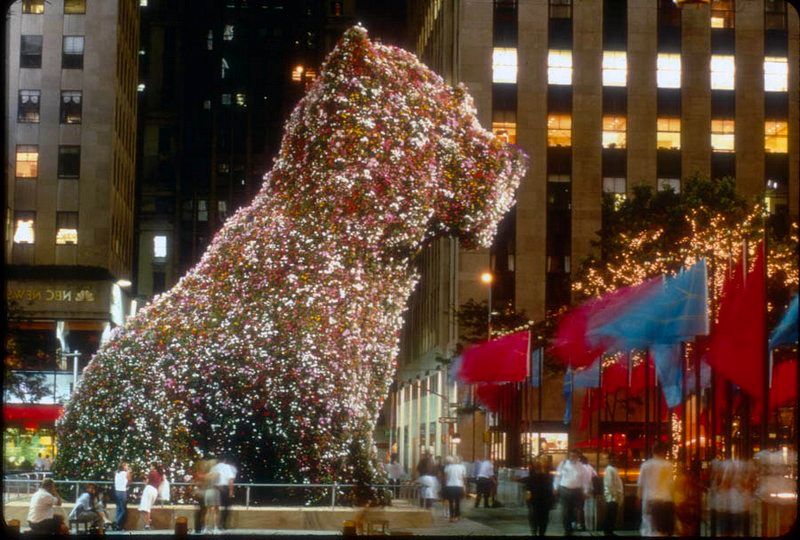
Photograph by Samuel Murray, Bart Barlow, Patrick McMullen, Courtesy of Public Art Fund, NY
This Public Art Fund installation of Jeff Koons’ flower Puppy at Rockefeller Center was the first of this work in the United States. More than 70,000 plants and flowers were installed, like Split Rocker, onto a steel frame planted with soil. The flowers included marigolds, begonias, impatiens, petunias, and lobelias, according to Public Art Fund. Koons calls the puppy a representation of “love, warmth and happiness.”
In 2008, Jeff Koons was the artist for the Metropolitan Museum of Art summer rooftop exhibit, which this year is home to The Theater of Disappearance, a site-specific installation created by Argentinian artist Adrian Villar Rojas and the house from the movie Psycho last year. Koons showcased three works, Balloon Dog in yellow, Sacred Heart (Red/Gold), and Coloring Book.
Jeff Koons has a series that riffs off The Hulk and from the December 2005 to February 2006, 100 inflatable hulks were on display in the lobby of architectural landmark, the Lever House, in a site-specific installation that also included other inflatable toys, paintings, and hanging fluorescent stars.
Next, check out 8 Places to See the Work of Keith Haring in NYC.
Subscribe to our newsletter